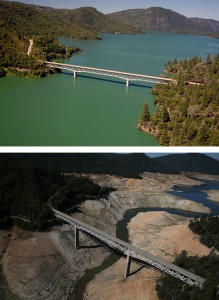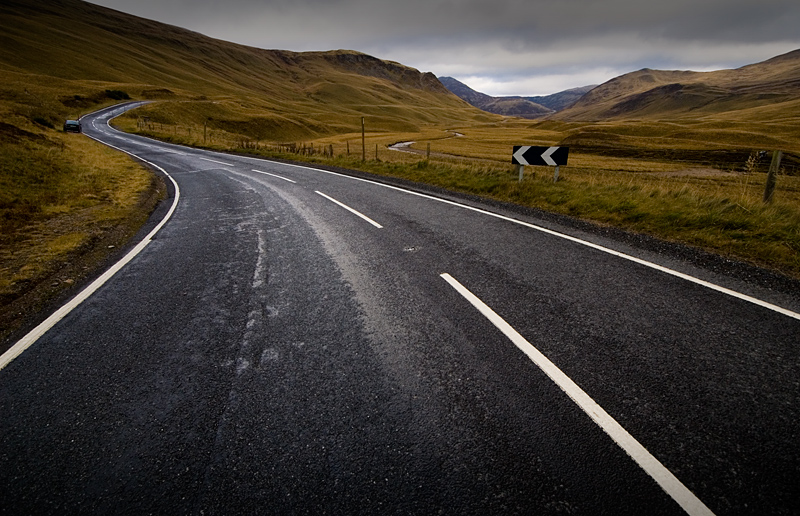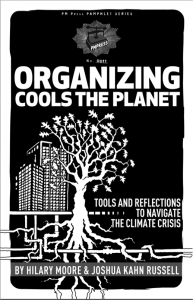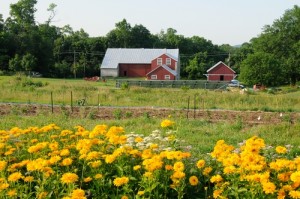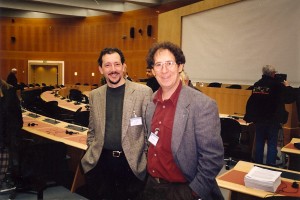For as long as there have been humans, there has been conflict and attempts to remedy it. These attempts have been in the form of treaties, intergovernmental organizations, or merely a compromise between two people. The League of Nations was a notable example of an attempt to remedy global conflict. Formed in the aftermath of World War I to foster international security and sustain peace. It was notable in that it represented a fundamental shift from the diplomatic philosophy of the preceding hundred years: The League lacked an armed force of its own and depended on member countries to enforce its resolutions and provide an army if needed. The League of Nations ultimately failed, but it inspired a myriad of intergovernmental organizations post-World War II, among them the United Nations (UN), the European Union (EU), the North Atlantic Treaty Organization (NATO) and the International Monetary Fund (IMF). All of these organizations were created to in some way forge a more peaceful world.
The Intergovernmental Panel on Climate Change (IPCC) is an intergovernmental body under the UN, created in 1988 to assess scientific information relevant to climate change, its impacts, and options for the mitigation of it. The creation of the IPCC was obviously a huge step forward in combating global climate change, as it brought together the ideas of independent scientists in separate fields around the world in an institution devoted to the full-time study of climate change and the addressing of urgent policy questions. But the creation of the IPCC might have been just as important in areas unrelated to climate change.
Stephen R. Weart only mentions it only in a very short, two-paragraph section in his book, The Discovery of Global Warming. But as an international relations major, this short section stood out to me. It discusses the IPCC as being an important player in the promotion of world peace.
One of the problems that international organizations have in creating more peaceful relationships between countries is that all member countries will naturally have conflicting national interests. Just look at the US and Russia—the US has vetoed 14 UN draft resolutions, and Russia has vetoed 11. Realist theory dictates that all states will act in their national interest and increase their power, even at the expense of other countries, because this is the only way for states to ensure their national security in an anarchic system—to become the most powerful state in the system. International institutions were created as a way to mitigate this anarchy, but as long as states remain sovereign the international system remains anarchic.
What makes the issue of global warming different from many other issues that the UN deals with is that the slowing of climate change is mutually beneficial to all countries. While it might not be in all countries; interest to allow Ukraine to join the EU, or to drive Bashar Al-Assad out of power in Syria, it is in all countries interests to mitigate global warming because the effects of a warmer climate on areas such a as a country’s economy, population and on the global food supply will be devastating. Getting countries to work cooperatively on an issue that is mutually beneficial is far easier than getting countries to work together on issues that are more decisive, and countries that cooperate form better relationships and will be less likely to come into conflict with each other. Why are we more scared of North Korea than of the UK, even though the UK has far more nuclear capabilities than North Korea? The UK theoretically should be a bigger threat to us than North Korea, but because we have a good relationship with the UK, we aren’t worried about coming into conflict with it. If these beneficial relationships can be formed between countries through cooperation on an issue that is mutually beneficial, it could be possible to foster more peaceful relationships in the international system. Of course, there are many other problems that must be dealt with before a lasting peace is achieved, but the IPCC could definitely play a major role in creating a lasting peace in the future.

 Mark Adams, intentionally or not, teaches a very important lesson about adventures. The age old saying “its about the journey, not the destination” rings especially true for Mark or anyone else who has trekked to Inca sites in Peru. At the onset of his expedition, Mark believes Machu Picchu to be his final destination and the most spectacular aspect of his journey, yet he is ultimately disappointed when he finally gets there. Throughout his travels with John, Mark is exposed to the raw power of the Peruvian landscape, and gets to see Inca ruins that are largely untouched, yet when he gets to Machu Picchu he is presented with a completely different site. In part he is disappointed by the state of Machu Picchu, the big entrance gate, large number of people, and switchback bus road up the mountain have a spoiling effect on the place. Now, Mark adams is not diminishing the wonder of the site, rather calling in to question peoples impact there. Is it right for people to so
Mark Adams, intentionally or not, teaches a very important lesson about adventures. The age old saying “its about the journey, not the destination” rings especially true for Mark or anyone else who has trekked to Inca sites in Peru. At the onset of his expedition, Mark believes Machu Picchu to be his final destination and the most spectacular aspect of his journey, yet he is ultimately disappointed when he finally gets there. Throughout his travels with John, Mark is exposed to the raw power of the Peruvian landscape, and gets to see Inca ruins that are largely untouched, yet when he gets to Machu Picchu he is presented with a completely different site. In part he is disappointed by the state of Machu Picchu, the big entrance gate, large number of people, and switchback bus road up the mountain have a spoiling effect on the place. Now, Mark adams is not diminishing the wonder of the site, rather calling in to question peoples impact there. Is it right for people to so 
